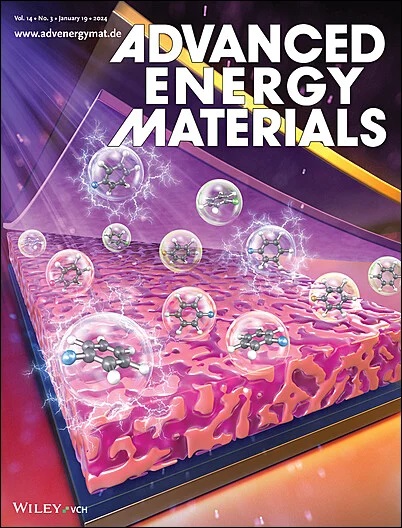Chemical and Structural Degradation of Single Crystalline High-Nickel Cathode Materials During High-Voltage Holds
IF 24.4
1区 材料科学
Q1 CHEMISTRY, PHYSICAL
引用次数: 0
Abstract
Enhancing the energy density of lithium-ion batteries (LIB) by increasing the nickel content in layered transition metal oxides is challenging due to accelerated degradation at high potentials. Here, degradation of single crystalline LiNi0.83Co0.11Mn0.06O2 (NCM831106) is investigated during prolonged, constant potential holds (Uhold = 4.5 V versus Li+/Li), using transmission electron microscopy (TEM), secondary ion mass spectrometry, and X-ray photoelectron spectroscopy. Electrochemical impedance spectroscopy reveals a novel non-linear increase in charge transfer resistance of the cathode over time. The findings show that after initial thinning, the CEI exhibits notable stability in composition and structure during prolonged holds. In contrast, the growth of a cubic, rock salt-like surface reconstruction layer (SRL) at the NCM surface is continuous. TEM image processing provides detailed insights into the non-uniform spatial distribution of the SRL. Employing a resistor network model, it is proposed that this spatially inhomogeneous, resistive SRL and consequent local current constrictions explain the non-linear resistance increase. These findings contribute to the understanding of cathode degradation during long-term high-voltage operation, i.e., when LIBs are maintained in a highly charged state. These results highlight, that progressive SRL formation, rather than CEI changes, dictates the evolution of kinetic limitations for high-Ni NCM.

高镍单晶正极材料在高压保持过程中的化学和结构降解
通过增加层状过渡金属氧化物中的镍含量来提高锂离子电池(LIB)的能量密度是具有挑战性的,因为在高电位下会加速降解。本文利用透射电子显微镜(TEM)、二次离子质谱和x射线光电子能谱研究了lini0.83 co0.11 mn0.060 o2 (NCM831106)单晶在长时间恒电位保持(Uhold = 4.5 V vs Li+/Li)条件下的降解。电化学阻抗谱揭示了阴极电荷转移电阻随时间的非线性增长。结果表明,在初始变薄后,CEI在长时间保持中表现出显著的成分和结构稳定性。相比之下,NCM表面的立方岩盐样表面重建层(SRL)是连续生长的。透射电镜图像处理提供了SRL非均匀空间分布的详细信息。采用电阻网络模型,提出了这种空间非均匀的电阻性SRL和随之而来的局部电流收缩解释了非线性电阻增加。这些发现有助于理解长期高压操作期间的阴极降解,即当lib保持在高电荷状态时。这些结果表明,SRL的逐渐形成,而不是CEI的变化,决定了高镍NCM动力学限制的演变。
本文章由计算机程序翻译,如有差异,请以英文原文为准。
求助全文
约1分钟内获得全文
求助全文
来源期刊

Advanced Energy Materials
CHEMISTRY, PHYSICAL-ENERGY & FUELS
CiteScore
41.90
自引率
4.00%
发文量
889
审稿时长
1.4 months
期刊介绍:
Established in 2011, Advanced Energy Materials is an international, interdisciplinary, English-language journal that focuses on materials used in energy harvesting, conversion, and storage. It is regarded as a top-quality journal alongside Advanced Materials, Advanced Functional Materials, and Small.
With a 2022 Impact Factor of 27.8, Advanced Energy Materials is considered a prime source for the best energy-related research. The journal covers a wide range of topics in energy-related research, including organic and inorganic photovoltaics, batteries and supercapacitors, fuel cells, hydrogen generation and storage, thermoelectrics, water splitting and photocatalysis, solar fuels and thermosolar power, magnetocalorics, and piezoelectronics.
The readership of Advanced Energy Materials includes materials scientists, chemists, physicists, and engineers in both academia and industry. The journal is indexed in various databases and collections, such as Advanced Technologies & Aerospace Database, FIZ Karlsruhe, INSPEC (IET), Science Citation Index Expanded, Technology Collection, and Web of Science, among others.
 求助内容:
求助内容: 应助结果提醒方式:
应助结果提醒方式:


